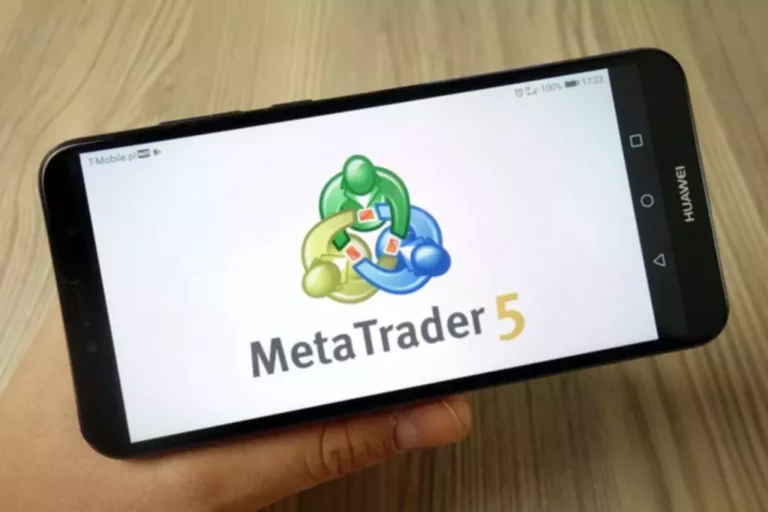Open Finance: We Examine the Benefits and Risks
Content
When you deposit money in a bank, for example, you’re trusting that institution to keep your assets safe and available to withdraw at your discretion. Once you deposit, though, banks will use that money in ways you might not like. Really, your account balance is just a number on a screen—at any given time, some percentage of that balance is loaned out to https://www.xcritical.com/ other customers, invested, etc. And in times of emergency, it’s not uncommon for customers to withdraw funds en masse, a phenomenon known as a “bank run” (which can deplete a bank’s entire cash reserves).
Potential for Market Manipulation

As third parties continue to develop better personal financial management (PFM) applications, competition is forcing incumbent financial institutions to develop both infrastructure and products. Proof of personhood Through the use of integrative protocols, banks can provide fintech companies with secure access to financial data. In turn, both parties can collaborate to bring new products and services to consumers.
DeFi Lending & Borrowing Services
With this innovation, developers began to build all kinds of DeFi DApps and protocols to provide financial services like lending, borrowing, trading, derivatives, and more to the crypto what is open finance in crypto market. In the following years, DeFi exploded in popularity on the Ethereum network. Users could finally take direct control of their finances without relying on governments or banks. Following in Ethereum’s footsteps, there are now many blockchains with similar programmability and their own flourishing DeFi ecosystems.

What is DeFi (Decentralized Finance)?
In being a liquidity provider, Uniswap replaces the traditional order book of a central exchange with a liquidity pool. This means that Uniswap creates a bridge between the relevant ERC-20 and Ethereum pair. The margin features allow traders to enter into short or long positions, through purchasing tokenized margin positions. Although it should be said that margin trading is combined with high risk, it does occur in traditional markets.
A more accessible system means more innovation
As such, Oasis functions both as an exchange and has crypto wallet-like functionality. Put simply, this means that Oasis is an important DeFi hub for those serious about getting into decentralized finance. Lenders can lock their crypto assets using the Compound Protocol, and borrowers can take out loans.

Through these integrations, open finance aims to aggregate consumer data into a single fully accessible location. The contrast between Bitcoin and fiat currencies illustrates the trade-offs between decentralization and centralization. Bitcoin offers the allure of financial freedom, but its concentrated ownership raises questions.
The interest rates are, more specifically, set using the supply and the demand of each crypto asset. Additionally, they also allow basically anyone to earn interest on their crypto assets through e.g. lending or borrowing. This is essentially giving normal people access to the mechanisms banks have been using to make money for centuries.
This system eliminates intermediaries like banks and other financial service companies. These companies charge businesses and customers for using their services, which are necessary in the current system because it’s the only way to make it work. DeFi uses blockchain technology to reduce the need for these intermediaries.
DeFi is an umbrella term for apps, platforms, and organizations that enable users to lend, borrow, stake (we’ll cover more on what staking is shortly), and trade crypto assets. DeFi advocates have ambitious goals—many of them wish to rewire traditional financial systems like banking and credit card payments. They believe blockchain technology can help replace most, if not all, of the predominant parts of the financial establishment. FinTech and DeFi are creating paths to financial inclusion for people who otherwise would not have access to traditional financial services. Although open finance makes data more readily available, centralized banks and third parties are subject to existing governance and regulatory requirements.
Decentralized insurance can make away with middlemen, financial institutions that charge exorbitant fees, and other ineffective aspects of the legacy insurance sector. Moreover, decentralized insurance is a great choice to reduce smart contract risk. Decentralized applications, commonly known as dApps, are at the core of DeFi. Creating blockchain-driven applications is becoming increasingly common, and can be compared to developing a smartphone application. However, dApps are dramatically more powerful, and can give users access to innovative new financial services. The sharing of information requires seamless integrations between banks and third-party fintech companies.
Platforms like Aave, Compound, and Maker have already made their mark. Despite the benefits of both fintech and DeFi, there are inherent challenges that must be overcome. But if emerging projects work collaboratively with incumbent financial institutions, open finance has the potential to transform the delivery of financial services around the world. The sector has been a hotbed for innovation in finance and adoption of blockchain technology.
However, instead of transactions relying on central entities for processing, DeFi protocols use the blockchain instead. To explain, DeFi apps operate using open and transparent smart contracts. This term may sound confusing for those unfamiliar with regular money markets. Put simply, money markets are the markets for borrowing and lending assets. As such, decentralized money markets mainly allow users to borrow or lend various crypto assets.
- Decentralized exchanges (DEXs), however, aim to allow trading without a centralized authority.
- In the last two years, the total value of tokens locked up in DeFi tools and protocols increased from $203 million to $9.53 billion.
- While it was designed to be decentralized, the current concentration of ownership challenges that notion.
- Coding errors and hacks are common in DeFi.[5][2] Blockchain transactions are irreversible, which means that an incorrect or fraudulent DeFi transaction cannot be corrected easily.
- Peer-to-peer lending under DeFi doesn’t mean there won’t be any interest and fees.
- Previously, he worked at TD Bank in Canada, where he was responsible for development of online and mobile banking and investing platforms.
Since there is no governing entity at the helm, and there are no regulations or rules to adhere to. DeFi applications are available to anyone—no matter where in the world they reside. Anybody with a cryptocurrency wallet and an internet connection can interact with the world of Decentralized Finance—with no credit checks, KYC, or other barriers to entry. Since the blockchain is permissionless, DeFi applications can be accessed by anyone—no matter where in the world they reside. The biggest risk in the DeFi space, again, is the absence of regulations to protect your money. Because DeFi is an emerging industry, you run the risk of investing in a project that could fail.
In simple terms, they’re like the apps on your smartphone or computer, but they operate with blockchain technology. In contrast, blockchain technology forms the basis of DeFi service-based platforms, which transact exclusively in digital assets. This rapidly expanding ecosystem exists primarily on the Ethereum blockchain, with ether (ETH) as the universal currency. However, blockchain networks like EOS, TRON, Polkadot, and Cosmos are building out DeFi platforms of their own. DeFi platforms operate with no central authority and utilize automation, smart contracts, collectivization, and crowdfunding to achieve economies of scale. While DeFi is all about removing any form of centralized control, it does use decentralized exchanges (DEXs) to help facilitate cryptocurrency operations.
DeFi, like the blockchains and cryptocurrencies it supports, is still in its infancy. Significant hurdles must be overcome before it can replace the existing financial system, which has its own issues that are difficult to resolve. The low amount of actual money invested in cryptocurrency and the effects that hype has on prices should make you consider whether investing in decentralized finance is worth it. If you have money you can afford to lose, the space can be very profitable—but the losses can be just as significant.
